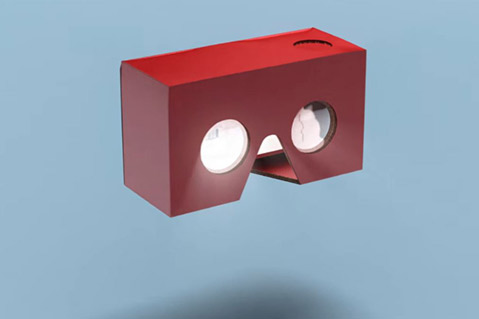February 17, 2017
3 Examples Of Great Virtual Reality Marketing
Could virtual reality revolutionize marketing and advertising?
It may already be.

Sure, VR has been proclaimed the wave of the future before, only to fade into the background. But that’s not likely to happen this time. With major players like Facebook, Sony, Samsung and others investing huge money in VR, the medium appears here to stay. More than just “stay” – it’s here to shake things up, providing an immersive sensory-filled experience through which marketers can tell a brand’s story and much more.
Already, VR is making inroads in the promotional products industry. Suppliers are offering products like brandable virtual reality glasses and headsets. Distributors have scored success selling them. For example, Lacey, WA-based Budd Bay Promotions & Apparel (asi/149520) recently sold 2,500 virtual reality viewers to a fire department, which used them in a community outreach program.
Beyond the promo industry, an array of brands in diverse industries have leveraged VR in creative ways to do everything from build their brands to directly drive sales. Here are a few examples of VR in action that caught our attention:
Merrell TrailScape
Merrell desired a uniquely memorable experience with which it could introduce the Capra – what was then the brand’s most technically advanced hiking shoe yet. The high-performance footwear maker got that and more when it partnered with Framestore Studio to create TrailScape – a 4-D, motion-tracked, multi-sensory virtual hike experience. Debuted at the Sundance Film Festival, TrailScape had participants wearing an Oculus Rift VR headset that transported them to rough mountain terrain in Italy’s Dolomites – all while they walked across a prop rope bridge that was set up in the physical experience space.
TrailScape, Framestore says, marked the first ever commercial use of an in-motion Oculus Rift experience. “Motion capture technology allowed our adventurers to explore the mountainside, with tactile elements such as rope walkways and shaking wooden planks underfoot driving the immersive nature of the piece to the absolute max,” Framestore says on its website. “They were faced with mini-crises en route – the rockfall of a landslide, a precarious summit – which saw them dabble in scenarios beyond the confines of their typical hikes.”
Indeed, the experience immersed participants in the terrains where the Capra shoe would be an especially valuable asset, making for a memorable product introduction if ever there was one.
Happy Goggles
Last year, McDonald’s celebrated the 30th anniversary of the Happy Meal being in Sweden by spiffing up, via virtual reality, what might be the world’s most iconic box. In effect, customers could easily transform Happy Meal boxes into VR goggles – called Happy Goggles – by tearing along perforated lines, folding, and inserting provided VR lenses and a smartphone (not provided). Once enabled, kids and curious parents could play Slope Stars – a ski-themed VR game delivering a 360-degree ski experience that, in addition to being fun, provided education on how to stay safe when whisking down the mountain. The Swedish National Ski Team even endorsed the game. In all, about 3,500 VR Happy Meal boxes were available at 14 McDonald’s in Sweden. “The Happy Meal is one of our most loved menus and therefore an appropriate platform for reaching out to our family customers through experiences that focus on play and learning,” Jeff Jackett, marketing director at McDonald’s Sweden, said when Happy Goggles were released last year. “We believe that many people will enjoy the fun skiing game with the new Happy Goggles.”
The Holoroom & HoloGram Experience:
Lowe’s, the home improvement chain store, has orchestrated two unique VR initiatives. Introduced at two stores in Toronto, the Holoroom is a virtual reality design tool that helps Lowe’s customers visualize home improvements. Intuitive and immersive, the Holoroom is an actual physical space where customers enter to wear a VR headset that transports them to a room they’ve just virtually designed with home upgrades they’re considering. Launched in 2014, Lowe’s followed that initial iteration up with a second generation Holoroom that was available in 19 stores across the U.S.
Additionally, Lowe’s teamed up with Microsoft to create a mixed reality offering – the HoloGram Experience – for customers in two pilot stores. In this innovative venture, customers could view physical objects and digital holograms through a Microsoft HoloLens headset while standing in a showroom kitchen at Lowe’s. “Using simple gestures to interact with their environment, customers could easily select from an array of design options and Lowe's products, including cabinetry, hardware, counter tops and appliances,” the retailer said.
Lowe’s plans to launch the HoloGram Experience at three more stores by the end of 2017. The experience will feature enhanced capabilities, powered by Microsoft Cortana, such as the capacity to capture a customer’s Pinterest board to predict their tastes for home renovation. “It will also compile data from feedback given by customers during the experience, including their level of sentiment, the time they spend looking at various elements of the kitchen, and key phrases that customers mention during the experience,” Lowe’s says.